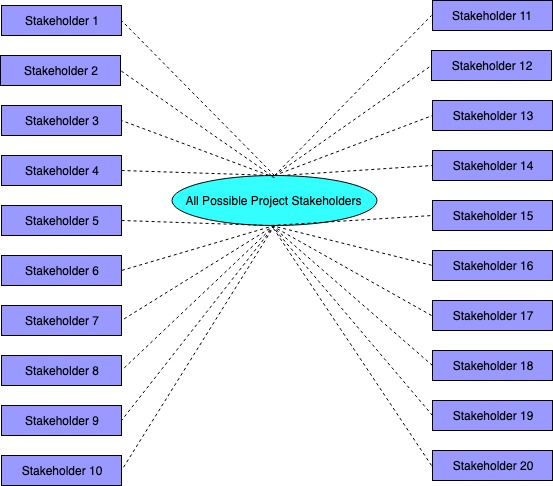Stakeholder Management Processes in Projects
Abstract
A stakeholder manager is an essential element for a prosperous project, program or portfolio. A stakeholder is an individual who will or can be affected by the aforementioned aspects. Thus, stakeholder management considers how the relationship between stakeholders can be affected and what processes can mitigate altercations. Stakeholder management processes are fundamental through businesses, organisations and projects, a set of strategies were developed to analyse stakeholders. The goals for the stakeholder management processes are to:
- Maximise supportive stakeholder engagement in projects
- Ensure the processes are understood by all stakeholders
- Introduce multiple key principles and processes for different stakeholder situations
This article looks into how essential separate stakeholder processes are for projects. Powerful stakeholders can be used in early development of projects or portfolios to improve quality. But, this can only begin once resources and a general understanding of the problem is gained through multiple meetings. Thus anticipation and prediction allows the stakeholder manager to plan and support their actions. This can only start through Stakeholder Identification processes.
Contents |
Stakeholder Identification
Before the management can begin with multiple processes within a project, an identification is essential. The identification includes an initial brainstorm investigating all stakeholders who are potentially affected by any decision throughout the project. Stakeholders can be businesses, companies, individuals or educational industries; therefore, spending a sufficient amount of time on the identification process is fundamental. The following questions should be asked during the brainstorming session to embark on the identification process:
- Who is the suppler of the project?
- Who is the customer?
- Who influences the main stakeholders?
- Who can be affected by the project?
- Who is working towards solving the project?
- Who has the decisions over resources?
- Who is ultimately in charge of the success of the project?
Once these questions have been answered, the stakeholders can be classified and analysed.
The image shows how multiple stakeholders are sprung from a simple beginning. The identification process is the basis for any Stakeholder Manager in the beginning of a project, program or portfolio. Therefore, this process should be conducted with known stakeholders before an analysis process can begin. Thereafter, the analysis of individual stakeholders can commence.
Stakeholder Analysis
Once the identification process is clear and all stakeholders are found and named, the stakeholder analysis can begin. The analysis looks at an in depth classification of individuals in order to find the most relevant for certain situations. One method is the Power/Interested Table. By classifying each stakeholder by power over work or interest over work.
- High power, interested people: Stakeholders who hold the most power over a project and you must make the largest effort to satisfy. These Stakeholders are extremely important as they are engaged within the project but also have the influence to close down or input with more resources. Hence, keep these stakeholders as satisfied as possible.
- High power, less interested people: Stakeholders who hold the most power but are not that engaged within the project. Equally as important as the prior stakeholder in regards to power but these are not highly interested within the project at hand. You should keep these satisfied but weekly meetings and messages are more relaxed.
- Low power, interested people: Stakeholders who do not have the power over the project but are highly keen on the outcome or issues that may arise. The Stakeholders who are interested but low in power may aid the project in multiple ways as they will be involved. Important to note that these stakeholders are often from outside businesses and although resources might be limited to begin with, investments are frequent as projects come to completion.
- Low power, less interested people: Stakeholders with little power and are no interested with the project at hand. These Stakeholders are the least important but they should still be monitored and analysed for future reference incase they move into a different position.
A second process for stakeholder analysis is by using four parameters:
1. POWER. Stakeholder’s authority level
2. INTEREST. Concern regarding the project outcomes
3. INFLUENCE. Active involvement in the project
4. IMPACT. The ability to effect changes to planning or execution
